Lipid Classification and Role of Mass Spectrometry in Characterization of Lipids
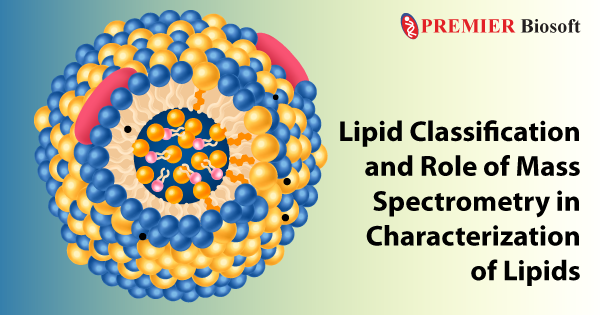
March 22, 2023
Lipids are a diverse group of biomolecules that play crucial roles in various biological processes. They are essential components of cell membranes, energy stores, and signaling molecules. Lipids can be classified into several categories based on their chemical structure and functions. Here, we will discuss the different types of lipids and the role of mass spectrometry in their identification.
Role of Mass Spectrometry in Lipid Identification
Mass spectrometry (MS) is a powerful analytical technique that can be used to identify and characterize lipids in complex biological samples. This technique involves ionizing the sample molecules and then separating and detecting the resulting ions based on their mass-to-charge ratios. One of the main advantages of mass spectrometry is that it can identify lipids without the need for separation or purification steps. This is important because lipids are often found in complex mixtures, such as biological fluids and tissues. Mass spectrometry can provide information on the molecular structure of lipids, including the number and position of double bonds, the length of the acyl chains, and the presence of functional groups such as phosphates and sugars.
One of the challenges of lipid identification using mass spectrometry is the large number of possible lipid species that can be present in a sample. This can make it difficult to identify specific lipids based on their mass spectra alone. To address this challenge, tandem MS (MS/MS) has been developed that allows for the identification of individual lipid species based on their characteristic fragment ions.
MS/MS has become an indispensable tool for lipid classification because it allows for the detection and quantification of lipid species with high specificity and sensitivity. One of the most significant advantages of tandem MS in lipid classification is its ability to distinguish between lipid isomers.
MS/MS-based Characterization of Lipid Classes
Lipids are classified into eight categories based on their origination entirely or in part via carbanion based condensations of ketoacyl thioesters and/or via carbocation based condensations of isoprene units.
-
Fatty acyls: Fatty acids are the simplest form of lipids. They are long-chain hydrocarbons with a carboxyl group at one end. Fatty acids can be further classified into saturated fatty acids and unsaturated fatty acids based on the presence or absence of double bonds in the hydrocarbon chain.
-
Glycerolipids: Triacylglycerols (TAGs) are complex lipids that consist of three fatty acid molecules esterified to a glycerol molecule. They are primarily found in adipose tissue and are a major energy storage molecule. For MS/MS identification, SimLipid confidently identifies the TAG lipids if all three acyl chains are identified.
-
Glycerophospholipids: Phospholipids are complex lipids that contain a phosphate group, a glycerol molecule, and two fatty acid molecules. They are major components of cell membranes and are essential for maintaining their structure and function. MS/MS characterization can help to identify lipid isomers. For example, phosphatidylcholine (PC) and phosphatidylethanolamine (PE) are two common phospholipids that differ only in their headgroups. These two lipids can be distinguished by analyzing their characteristic fragment ions.
-
Sphingolipids: Sphingolipids are complex lipids that contain a sphingosine or a similar long-chain base. They play important roles in signaling and cell recognition.
-
Saccharolipids: Saccharolipids are compounds that comprise a fatty acid chain linked to a sugar backbone.
-
Polyketides: Polyketides are natural products derived from acetyl-CoA and are often referred to as secondary metabolites. They illustrate diverse functions with clinical applications.
-
Sterols Lipids: Steroids are lipids that have a characteristic four-ring structure. Cholesterol is the most well-known steroid and is a critical component of cell membranes and a precursor for the synthesis of other steroids such as hormones. For these lipids, the characteristic cholesterol peak is identified using SimLipid software.
-
Prenol Lipids: Prenols are lipids obtained from five-carbon-unit isopentenyl diphosphate and dimethylallyl diphosphate.
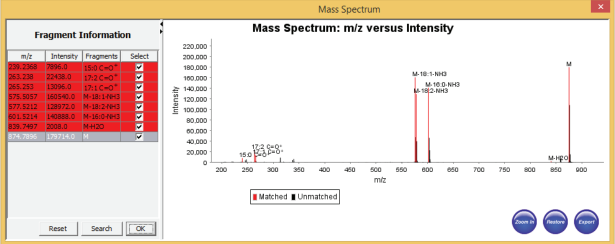
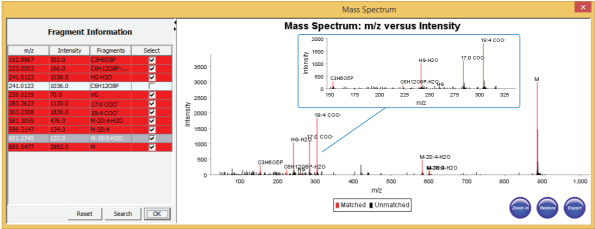
PC lipid

PE lipid
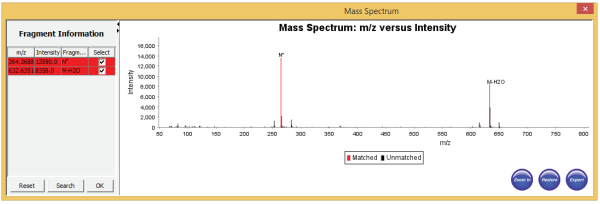
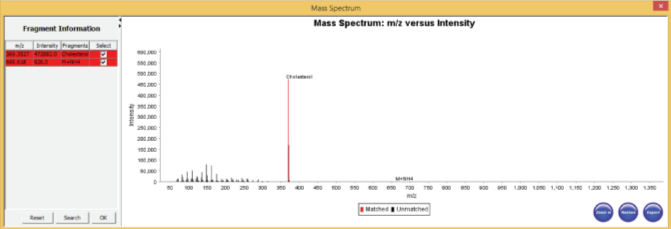
Another advantage of tandem MS is its ability to quantify individual lipid species. This is particularly important in the analysis of complex lipid mixtures, where the abundance of different lipid species can vary significantly. By quantifying individual lipid species, researchers can gain insight into the regulation of lipid metabolism in various biological systems. Tandem MS is a powerful analytical tool that has revolutionized lipid classification. Its ability to distinguish between lipid isomers and quantify individual lipid species has made it an indispensable tool for studying lipid metabolism in various biological systems.
Analysis of these lipid MS/MS data presents several challenges that must be addressed for accurate and reliable results. One of the major challenges in lipid MS/MS data analysis is the large amount of data generated by use of different MS techniques. This challenge can be addressed through the use of SimLipid® software that can handle the vast amounts of data generated by these complex MS experiments via different data pre- and post-processing features, including those for analyzing signature fragment ions. SimLipid supports LC-MS, LC-MS/MS, MALDI/ESI-MS, ESI-MS/MS data from across all leading MS vendors. To learn more about the different supported lipidomics approaches, click here.
| Comment | Share |
|


